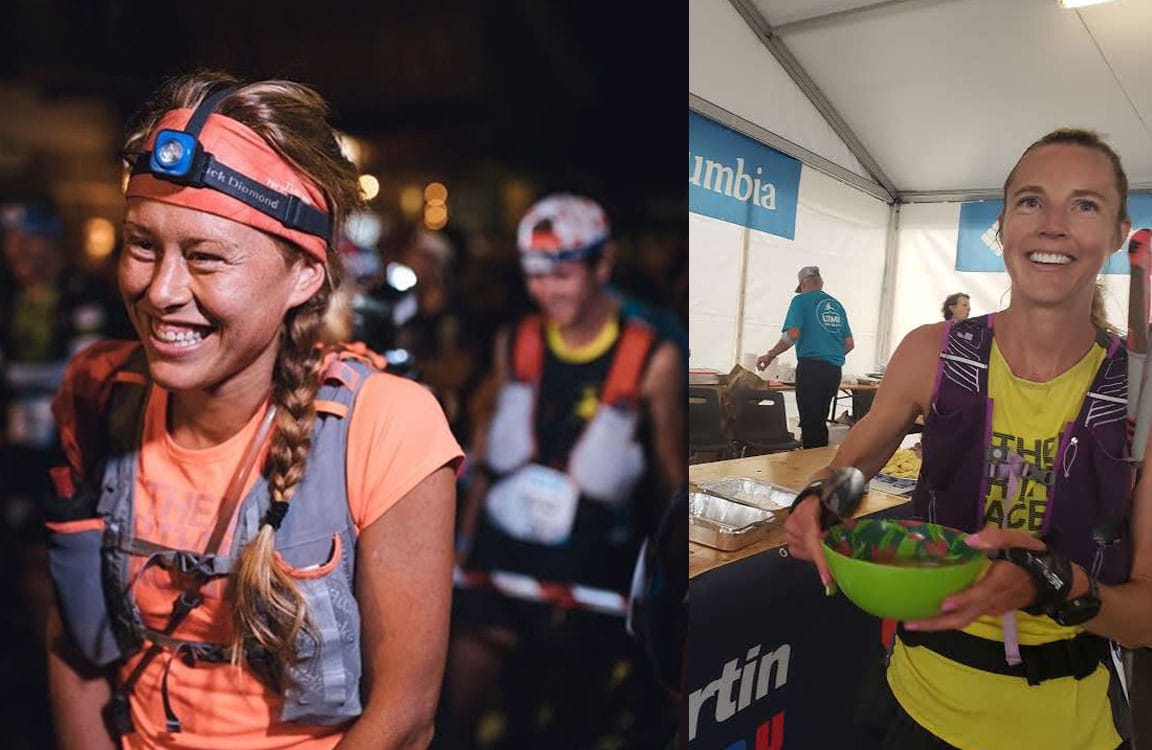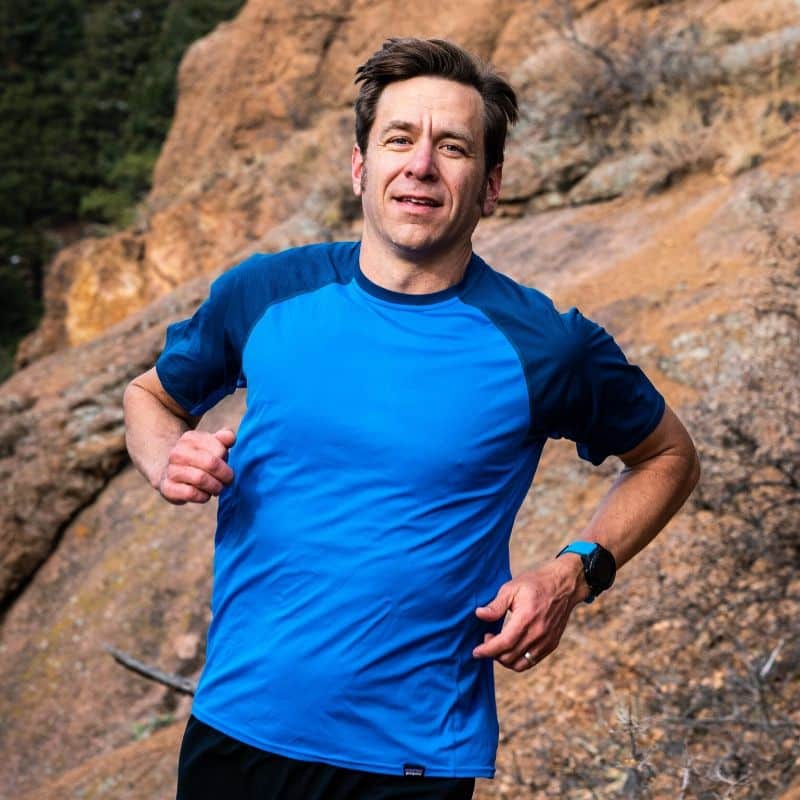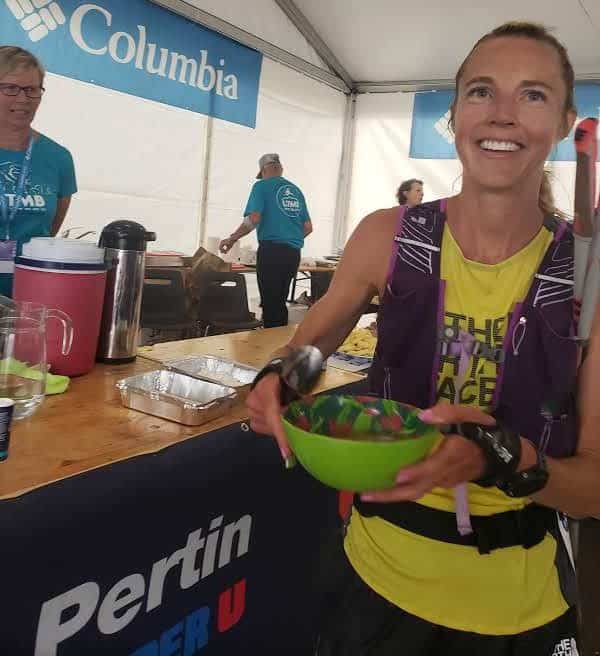
Top 3 Hot Takes from the 2019 UTMB, CCC and TDS Races
By Jason Koop,
Head Coach of CTS Ultrarunning
As has been the case for the last few years, I spent the better part of a weekend following athletes around the (newly revamped) Sur les Traces des Ducs de Savoie (TDS), Courmayeur – Champex – Chamonix (CCC), and Ultra-Trail du Mont-Blanc (UTMB) races. The races were packed with drama, success, failure and everything in between. From the front of the field through the final finishers, the mountain teaches us common lessons – sometimes the hard way – about how to prepare for and execute a great race.
Lesson #1- To win the race, you can be reasonably bold or just grind it out.
UTMB winners Pau Capel and Courtney Dauwalter days played out in seemingly opposing fashion, yet both ended up taking the top step of the podium. Pau took the lead early and never relinquished it, looking spry and springy all the way around the 170-kilometer course. Courtney on the other hand, quite frankly looked terrible the whole way. Normally a smiling and happy runner, she muddled, grunted and grinded her way to a 24 hour and 34 min winning time (which from a historical perspective is quite good).
As a quick comparison, go take a quick look at Update #8 and Update #9 from the final climb to Tête Aux Vents here- https://utmbmontblanc.com/en/live/utmb. It’s an easy compare and contrast of the styles from the winners of both races on the exact same climb.
What all runners can learn from this: There are several different pathways to the exact same result. If you are having a good day, take it and roll. Don’t get greedy with your race plan, but at the same time, if you are having a good day enjoy it and ride out the goodness, hopefully all the way to the finish line. On the other hand, if you are not having the best day and you have built up enough good fitness (as Courtney had), you should have enough resources to simply grind and tough it out. The day might not be all you hoped of, but you can still reach the finish line (and maybe surprise yourself along the way).
Lesson #2- Everyone has a bad day. The harder the race, the more the bad day is exacerbated.
Many of the top runners in the UTMB, CCC and TDS races did not have their days go to plan. Some of these runners ended up dropping out, while some ended up forging on for a respectable finish. Similarly, many of the mid- and back-of-the-pack runners we work with, and several I witnessed out on the course, were simply not having their best days. Although there is no easy ultra, the UTMB race in particular presents a wider variety of issues to contend with. The difficulty is compounded by the event’s length, starting at 6:00PM, running through the entire night right from the get go, copious amount of elevation gain, and the sheer energy of the Chamonix valley that drains the runners in advance of the starting gun. Generally speaking, athletes who got themselves into trouble in this race simply had a harder time bouncing back than those in the shorter (but still ridiculously hard) TDS and CCC.
What all runners can learn from this: If you are in a ridiculously hard race, do yourself a favor and play some defense early on. Aside from entering the race fit and ready, runners can do themselves a favor by running conservatively, taking some additional time at aid stations, having a good attitude, and – if there are any weather conditions – making sure you have enough gear to stay comfortable. All of these will give you a bit of downside protection for races where the penalty for failure is high!
Lesson #3- Multiple mistakes have compounding effects
Every runner wants to have a perfect race. Sorry to tell you, but those are rare. In a lifetime of running if you are able to scrape together a small handful of perfect races, consider yourself lucky. More often, ultramarathons are a series of problem solving exercises. Encounter some bad weather, move through it. Then, you will have a big, quad thrashing descent. After the descent, maybe your legs are giving you trouble. Your legs feel a bit better, then you have a monster climb ahead of you. Most runners can take each individual battle head-on in sequence by solving one problem and then moving to the next.
► Free Ultrarunning Training Assessment Quiz
Take our free 2-minute quiz to discover how effective your training is and get recommendations for how you can improve.
When issues pile on top of issues, the effect is greater than the sum of all the individual parts. I saw this unfold at the Beaufort (91.7 K) aid station during TDS. Nearly every runner from the front to the back of the field was tired at this point. CTS coach and eventual 2nd place finisher Hillary Allen (coached by Adam St. Pierre) even had the 1000-yard stare as she entered the aid station. As the day transpired, the runners arriving at the aid station complaining of one singular thing (I can’t eat, for example) would move in and move out quickly to tackle the next climb. The runners with a laundry list of issues (I can’t eat and my feet hurt and my quads are shot) took at least four times longer in the aid station and were moving at half the speed, regardless of where they were in the field. In this way, the runner who can’t eat but deals with it, then has their feet hurting and deals with that, and then has shot quads and deals with that, will finish far faster than the runner dealing with all three issues at once.
Enjoying This Article? Get More Free Running Training Tips
Get our coaches' best training advice, delivered straight to your inbox weekly.
What all runners can learn from this: Dealing with issues during ultrarunning is inevitable. They are long and hard enough to present a host of problem solving opportunities. When these ‘opportunities’ creep up, don’t compound the problem by creating another one or not addressing the first. Address each issue as it comes up, when it comes up. ADAPT when necessary and slow down if you need to. It is far better to take a bit more time as issues creep up than continue to plow forward and create compounding issues.
I have always relished the opportunity to attend races as a coach, fan and support crew. These opportunities have always been ‘learning by observing’. The UTMB, CCC and TDS races were no exception. If you are reading, I hope you enjoyed the wonderful coverage of the event and some of these on the ground takeaways.



Comments 6
I’m 67 too, and was feeling a bit isolated among my (highly supportive but much younger) co-runners. Great to know there are more out there, and yes, an article on ultras in your 7th decade and beyond would be great. Thanks Jason.
Pingback: UTMB 2019: If A Lifeline Appears, Say Yes
Great article! thanks Coach😀
I have a request. 🙂 I am a back of the pack guy and, in one case recently, had a sweeper recognize from another ultra! We had gotten well acquainted.
At my age, 67, I’m beginning to have those thoughts that maybe I’m just treading water, my PRs are all behind me and, well, is it worth the effort to push to my max heart rate on my interval days?
I’m still having fun but I’m looking at fast 50 miler on a road course the end of October. I think maybe, just maybe, if all goes well, I could PR it. But I’m a little nervous. What if I don’t make that nasty cutoff, again?
Any ideas for an old whiner (Ask Corrine, she’s a very patient listener! LOL)?
It be great to see an article on ageing and ultra running! You always dig up great research!
Jason
I just completed a 108 km ultra in Kimberley BC Canada. I am 67 years of age and this was my first 100km ultra.
Just wanted to say thank you for your advice in your emails and your book. I contribute my success to your teachings.
Awesome! I am 67, as well, and that is a huge accomplishment!